Encoder setting – easier than ever
6th March 2013
Source:
Variohm EuroSensors Ltd
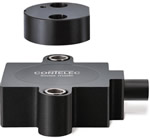
Variohm EuroSensor presents the following application note on setting up programmable angle encoders:
The challenge
Precision installation and adjustment of encoders, exact setting of the zero or middle point or the start and end points – these are some of the challenges facing system integrators, production plants and service personnel.
Components are frequently installed in such confined spaces that mechanical adjustment of the rotary encoder is impossible or extremely difficult. There is also frequently the need to reset angle sensors in the field in order to adjust for wear-related changes of the measured system. This should be easy and convenient to do and not require any complex aids.
A further issue, that should not be underestimated, is the wide variety of available applications that many customers have, and the numerous requirements these place on the encoders. Whilst it is true that high-precision angle sensors are preconfigured with custom output characteristics and angle ranges, and are available at attractive prices ex-works, the procurement and storage of a range of different encoder variants has logistic and financial consequences.
The solution
To meet these challenges and create a high level of flexibility for customers, Contelec has developed a simple, innovative solution with its ‘setting features’. These enable the on-site configuration of encoders based on Vert-X MH-C2 technology after installation. To enable parameterisation, the rotary encoders have two additional digital inputs (Set 1 and Set 2), which are used to set the sense of rotation (CW, CCW), index points (zero point or middle point) or start and end points as often as needed. This process could not be easier. All that is needed is to connect the two input leads to ground in a specific sequence.
The effortless configuration of the Vert-X MH-C2-based angle sensors with integral setting features significantly simplifies installation and adjustment. A key factor here is that installation in a machine is not restricted by mechanical tolerances or the angle position of the rotary encoder. This can be illustrated with the setting of the start and end points in the ‘plough turn control’ application. Once the angle sensor has been attached in any position, the plough is physically moved to its starting point and Set 1 is set to zero. In the next step, the plough is moved to its end position and the second input (Set 2) is connected to ground. This simple process sets the start and end points and ensures highly accurate adjustment of the encoder. Efficient ploughing with optimal plough inclination is now child’s play.
Customer benefit – you profit from
• Easy, individual setting of the sense of rotation (CW, CCW), index points (zero or middle point) or start and end points – on site and without any additional aids
• No mechanical adjustment of the rotary encoder necessary (time and cost-saving, highly accurate angle measurements even in systems which do not permit mechanical adjustment)
• Maximisation of measurement accuracy – even with wide installation tolerances
• Compensation of mechanical inaccuracies on the system being measured (component tolerances are eliminated)
• Easy compensation of mechanical wear by ‘readjustment‘ in the field (increase in quality)
• Reduction of the required number of encoder variants (simplified storage, reduced costs)
• High level of safety ensured by standardised setting sequence and non-volatile storage of the settings
• Also suitable for use in heavy-duty solutions
The key performance characteristics
The Contelec Vert-X MH-C2 rotary encoders with integral setting features significantly simplify installation and adjustment of angle sensors.
Encoder types - Contactless and non-contacting rotary encoders
Encoder size - From 22 mm outside diameter
Sense of rotation (CW, CCW)
Possible settings - Index point (zero point/middle point)
Start and end points
Setting - Through two additional digital inputs
Standardised setting sequence
Example: setting the angle range (start and end points) and sense of rotation
1. Turn the rotary encoder to the desired starting angle
2. Connect ‘Set 1’ input to GND
3. Within the specified time (tsetting), turn the rotary encoder to the desired end angle and connect the ‘Set 2’ input to GND
4. The angle range and sense of rotation have now been set and stored
A further issue, that should not be underestimated, is the wide variety of available applications that many customers have, and the numerous requirements these place on the encoders. Whilst it is true that high-precision angle sensors are preconfigured with custom output characteristics and angle ranges, and are available at attractive prices ex-works, the procurement and storage of a range of different encoder variants has logistic and financial consequences.
The solution
To meet these challenges and create a high level of flexibility for customers, Contelec has developed a simple, innovative solution with its ‘setting features’. These enable the on-site configuration of encoders based on Vert-X MH-C2 technology after installation. To enable parameterisation, the rotary encoders have two additional digital inputs (Set 1 and Set 2), which are used to set the sense of rotation (CW, CCW), index points (zero point or middle point) or start and end points as often as needed. This process could not be easier. All that is needed is to connect the two input leads to ground in a specific sequence.
The effortless configuration of the Vert-X MH-C2-based angle sensors with integral setting features significantly simplifies installation and adjustment. A key factor here is that installation in a machine is not restricted by mechanical tolerances or the angle position of the rotary encoder. This can be illustrated with the setting of the start and end points in the ‘plough turn control’ application. Once the angle sensor has been attached in any position, the plough is physically moved to its starting point and Set 1 is set to zero. In the next step, the plough is moved to its end position and the second input (Set 2) is connected to ground. This simple process sets the start and end points and ensures highly accurate adjustment of the encoder. Efficient ploughing with optimal plough inclination is now child’s play.
Customer benefit – you profit from
• Easy, individual setting of the sense of rotation (CW, CCW), index points (zero or middle point) or start and end points – on site and without any additional aids
• No mechanical adjustment of the rotary encoder necessary (time and cost-saving, highly accurate angle measurements even in systems which do not permit mechanical adjustment)
• Maximisation of measurement accuracy – even with wide installation tolerances
• Compensation of mechanical inaccuracies on the system being measured (component tolerances are eliminated)
• Easy compensation of mechanical wear by ‘readjustment‘ in the field (increase in quality)
• Reduction of the required number of encoder variants (simplified storage, reduced costs)
• High level of safety ensured by standardised setting sequence and non-volatile storage of the settings
• Also suitable for use in heavy-duty solutions
The key performance characteristics
The Contelec Vert-X MH-C2 rotary encoders with integral setting features significantly simplify installation and adjustment of angle sensors.
Encoder types - Contactless and non-contacting rotary encoders
Encoder size - From 22 mm outside diameter
Sense of rotation (CW, CCW)
Possible settings - Index point (zero point/middle point)
Start and end points
Setting - Through two additional digital inputs
Standardised setting sequence
Example: setting the angle range (start and end points) and sense of rotation
1. Turn the rotary encoder to the desired starting angle
2. Connect ‘Set 1’ input to GND
3. Within the specified time (tsetting), turn the rotary encoder to the desired end angle and connect the ‘Set 2’ input to GND
4. The angle range and sense of rotation have now been set and stored
Similar articles
More from Variohm EuroSensors Ltd
- Industrial grade position feedback for IoT 3rd December 2019
- Magnetic angle sensor range for vehicle automation 14th October 2019
- Precise temperature control for novel food production 12th September 2018
- Non-contacting angle encoders models offer a wide range of options 6th July 2018
Product Centre Updates
2024 World Battery & Energy Storage Industry Expo (WBE)
8th August 2024
China 1st and 2nd Floor, Area A, China Import and Export Fair Complex

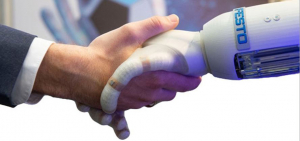
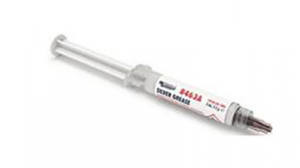
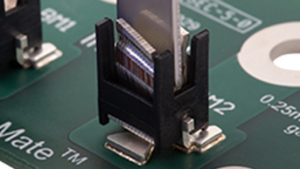
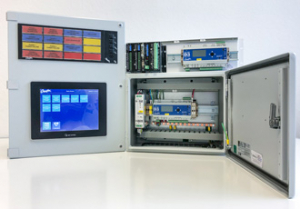







Write a comment
No comments